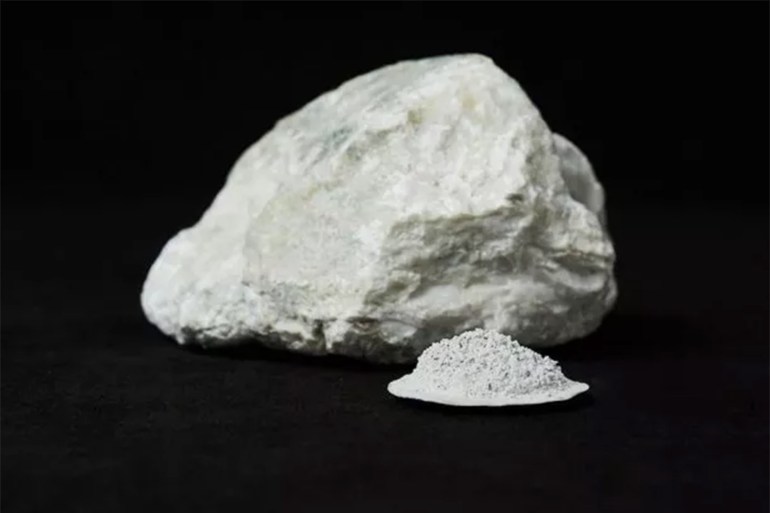A group of astronauts plans to turn lunar dust into a raw material, which can then be converted into building materials by 3D printers, for the construction of settlements and landing platforms on the Moon.
And the American magazine "Newsweek" says, in a report by the writer Michael Leidich, that this project is being implemented by a group of scientists in Germany from the Hannover Laser Center and Berlin Technical University. .
The experiments carried out on Earth have been remarkably successful, and now the experts at the Moonrise project are preparing to repeat the same experiment during a trip to the moon's surface.
Melting lunar dust with special lasers that can turn it into usable raw materials (websites)
Use of building materials on the spot
According to the author, the scientists supervising these experiments are confident that melting lunar dust with special laser beams can turn it into usable raw materials through 3D techniques, for the construction of buildings, roads and landing platforms.
The researchers also stress that this is the most appropriate alternative, since transporting these materials into space is a very expensive option;
The writer quotes Jörg Neumann, director of the Moonrise project, as saying that "transporting one kilogram of building materials from Earth to the Moon costs up to a million dollars, which is a very high cost."
On the other hand, the lunar rocks that are melted are abundantly available and can be used as raw materials to build infrastructure on the moon, by constructing on-the-spot building sites and building infrastructure at the lowest cost.
The writer believes that the idea of using building materials on the spot on the moon's surface may be a decisive factor in the development and success of space exploration in general, as the team of scientists believes that treating these materials with laser beams will lead to the production of crumbled lunar rocks.
The writer quotes the director of the Moonrise project that "billionaires are not the only ones who want to take the rich and tourists to the moon, as the European Space Agency, in turn, has plans to establish a village on the moon. And the far part of the moon, which is the veiled half. Always off Earth, it will be a convenient location to focus telescopes and space observation equipment."
German scientists have developed powerful and compact lasers based on artificial intelligence (websites)
Laser based on artificial intelligence
In addition, the weakness of gravity makes the moon an ideal place to become a stopover before missions to other distant destinations.
But the question remains, how will the landing and launch platforms, and the rest of the buildings and infrastructure needed for these projects, be created.
Now it seems that the cornerstone of all these ideas has been reached, through this technique developed by scientists in Germany.
And the same team, with funding from a subsidiary of the German car manufacturer Volkswagen, had developed powerful and compact lasers based on artificial intelligence, which were tested in laboratories through a robotic arm installed in a lunar probe.
These scientists also succeeded in breaking up lunar rocks under lunar-like gravitational conditions.
The challenge now is how to design portable laser equipment for a trip to the moon, and these scientists want to develop a new spaceflight model for this.
During the implementation of this ambitious operation on the surface of the moon, cameras will take pictures, and then researchers on the ground will analyze them using an artificial intelligence system, to determine the locations and lunar dust that will be used, with quality control throughout the process.
Newman adds that "the equipment for breaking up lunar rocks will fit the process of landing on the moon, but the real challenge remains how to develop artificial intelligence on Earth to be able in advance to deal with a completely different environment on the lunar surface."
simulation and launch
To overcome this challenge, scientists are preparing a new laboratory at the Berlin University of Technology that simulates the conditions on the surface of the moon in terms of terrain, lighting and scenes, in order to train artificial intelligence.
The Moonrise project is scheduled to run for 3 years, with funding from the German Federal Ministry for Economics and Climate Action in the amount of 4.75 million euros ($4.82 million), and the mission is scheduled to be launched in 2024.

